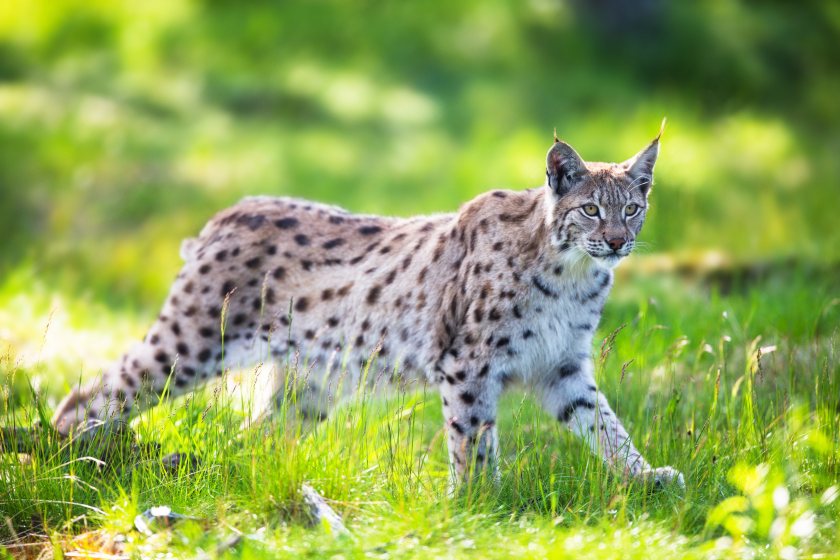
A lynx comeback in northern England has won public support – but farming voices are warning the move must be handled with care to protect livelihoods.
A consultation has found that 72% of people in Northumberland, and parts of Cumbria and southern Scotland, support the potential reintroduction of the Eurasian lynx – a predator that vanished from Britain in medieval times due to hunting and habitat loss.
The Missing Lynx Project ran the consultation, which included almost 10,000 visitors to its touring exhibition, as well as 100 stakeholder meetings and over 1,700 questionnaires.
While some farmers have expressed openness to the idea, others remain worried about potential impacts on livestock, particularly sheep, and have called for strong safeguards before any release.
There are concerns about compensation for losses, the costs of additional fencing or livestock protection, and whether long-term monitoring would be guaranteed.
Dr Deborah Brady, project manager at the Lifescape Project, which undertook the consultation, said: “Now we know that the majority of local people support lynx reintroduction and we also have the scientific evidence showing that a release of lynx in north-west Northumberland could work.
“We will continue to work with local communities to consider how a reintroduction project could be managed to maximise benefits and reduce risks.
"We hope to apply for a licence but only once we have a plan that’s collaboratively designed with local people which sets out measures that are acceptable, feasible and can be implemented.”
The research coincides with a new study showing that releasing 20 lynx into Kielder Forest over several years could lead to a population of around 50 animals in the region.
The report identifies this as the only area of England and Wales with sufficient continuous woodland for lynx to thrive.
However, many farmers fear that even a small number of predation incidents could have a significant financial and emotional toll on farm businesses already under pressure from fluctuating prices, disease outbreaks and unpredictable weather.
Industry groups have stressed the importance of robust, long-term support for farmers, including clear compensation schemes, rapid-response teams in the event of livestock attacks, and ongoing monitoring to ensure lynx numbers remain sustainable.
Others have questioned whether reintroduction could lead to increased regulatory burdens on land use or restrictions on certain farming practices.
As part of the project, a group of Northumberland farmers visited lynx reintroduction areas in Europe to see how coexistence works in practice.
Sheep farmer Lauren Harrison from Hadrian’s Wall was among them, who is positive about any possible reintroduction.
She said: “I saw in Europe that it’s possible to live alongside lynx. The risks to livestock can be minimal and there are so many positives. Tourism is an obvious one, but I also think a more balanced ecosystem is beneficial to farmers.
"I’d urge other farmers to engage with them and take some ownership of the project. The wider public clearly supports a lynx reintroduction and this is a great chance to help make it happen with so little risk to our businesses.”
Mike Pratt, chief executive of Northumberland Wildlife Trust, called the support “hugely positive”, adding that locals “are proud our region is a stronghold for threatened species such as red squirrels and water vole – so it’s no surprise that they’re in favour of bringing more back”.
The consultation continues, with organisers urging people nationwide to take part in the national questionnaire before any decision is made.
